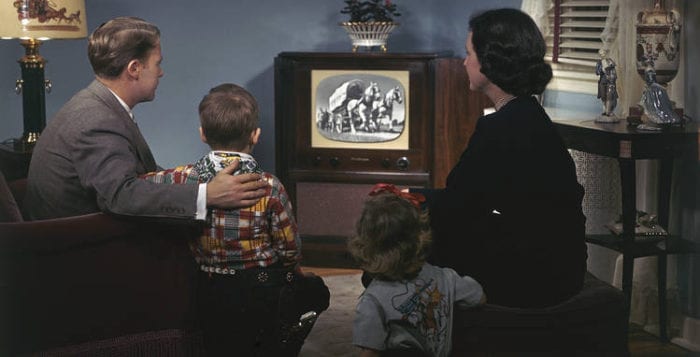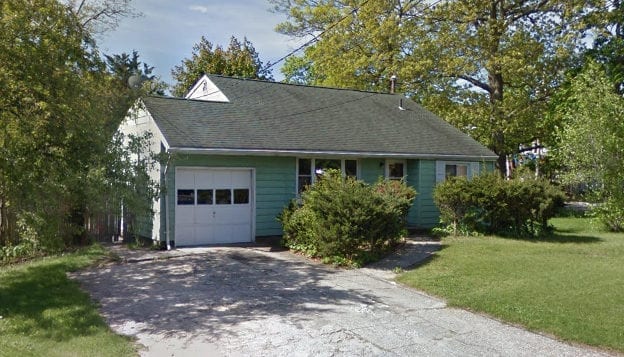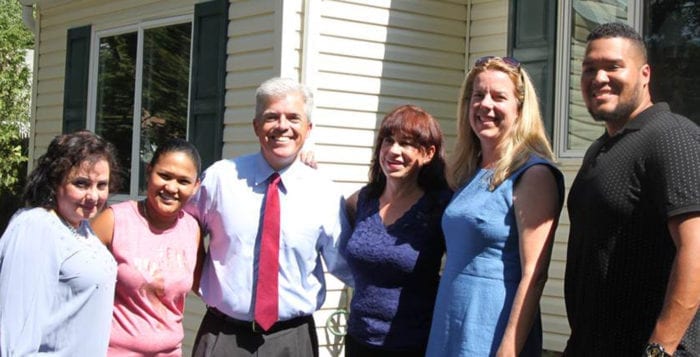As the old cliché goes, it’s impossible to know when opportunity will knock, just be ready to answer the door when it does. Opportunity knocked for Celina Wilson about 30 years ago, both literally and figuratively. She went on to dedicate her life’s work to the opportunity that was standing at her front door.
The Port Jefferson Station resident founded Bridge of Hope Resource Center with her husband, George, in the late 1990s, a nonprofit dedicated to strengthening communities through family communication. The organization for years has been holding seminars, forums, workshops and other similar events to educate the community and arm parents with strategies for connecting with teens and young adults. Wilson and the organization’s overarching ethos is that education and prevention are the best means for keeping kids from falling victim to the ills lurking in society, like drug addiction and depression. In 2018, Wilson is hoping to advance Bridge of Hope’s mission a step further.
Wilson’s in-laws lived in Port Jefferson Station for about 30 years, but 10 years ago, after her husband’s mother died, her father-in-law, John Wilson, decided to move out of the longtime family home on Roe Avenue. The home was left to Bridge of Hope to use as an asset, sheltering families in crisis who had a hard time finding a place to live. Wilson said the only stipulation was the tenants needed to find work and contribute to the rent. Over the course of the last decade, Wilson said three or four families have stayed at the home.
Now, she plans to repurpose it to serve as a shelter for at-risk girls between 16 and 21 years old. The shelter — which will be called John’s House, to honor Wilson’s late father-in-law — will be a place for girls who run away from home or pose a risk of doing so due to conflicts with parents or guardians. While at the home, those staying in the five beds will be supervised and subjected to counseling and other programs in an effort to restore open lines of healthy communication with parents.
The inspiration for the home was several decades in the making for Wilson.
She was living with her now-husband’s family in the same Port Jeff Station home about 30 years ago, she recalled, when a 16-year-old boy knocked on her door. Even though it was 10 p.m., the then-21-year-old answered.
“He was wondering if he could sleep in our house,” Wilson said. “He was tired. He had a fight with his mom, and I’m figuring, ‘He must have knocked at plenty of houses. Why ours?’ We didn’t understand. But he asked us, ‘Please, just for the night, can I just come in?’ What went through my mind was, ‘If we don’t let him in, he’s going to be in the street and who knows what?’”
In the morning, Wilson remembers waking up wanting to hear more of his personal story, but by that time, he was already gone.

“What went through my mind was, ‘If we don’t let him in, he’s going to be in the street and who knows what?’”
— Celina Wilson
“I realized then, ‘Oh my gosh, there’s so many young people out there, I wonder what his mom was thinking, if she knew he was somewhere safe,’” she said. “The story repeats itself if we fast forward, but it’s
different today because of what our young people are facing.”
Wilson said the home will be funded by donations and some money from the New York State Office of Children and Family Services, which will also help in placing some of the girls in the home, though space will be available to accommodate the weary traveler like the one who knocked on her door 30 years ago.
“We feel the house is going to be a place where families can send their teens and work on situations that they themselves cannot work on in the home, and prevent them from running away,” Wilson said. “The goal is to reunite that youth back with their family.”
She said the length of stay for occupants will be determined on a case-by-case basis, with an eye toward sheltering those most in need, though she estimated many will be allowed to live there for up to 18 months. Each of the tenants will be expected to participate in counseling sessions and work toward agreed-upon goals, all while Bridge of Hope will be maintaining contact with the families to try to rebuild lines of communication. Wilson said the organization will follow up with the tenants even after they leave the home to make sure they stay on track as they grow up and prepare for independence.
One representative from the resource center will live permanently at the home, who Wilson referred to as the “house mom,” though aides, case workers and other specialists will also be on hand on a rotating basis seven days a week. She said tenants will be supervised at all times and expected to be at the home unless they’re at school, work or an organized activity.
She said admittance into the home will have nothing to do with demographics, as family conflict is common among all segments of society.
“It could be anyone’s child that is out there on the street,” Wilson said. “It could be my child.”
One community member who was helped by Wilson and Bridge of Hope said she sees the organization’s founder as the perfect person for an initiative like John’s House.
“She made things happen for me,” said the woman, who asked to remain anonymous. She said Wilson and the
center worked with her for five years, assisting in finding work and getting her life on track while dealing with a physical disability. “She’s right for these kids. A lot of young people don’t have a place to go.”
She called Wilson a good person and a woman of her word, adding she wished the founder would run for political office.
Wilson said she contacted the Suffolk County Youth Bureau, an entity under the county executive’s purview dedicated to ensuring effective management of county funds for youth services, for assistance in
establishing policies for her initiative. She said the organization also conducted an inspection at the house, which will undergo minor renovations prior to her October target date for opening.
Though members of the bureau’s leadership declined to comment on the dealings with Bridge of Hope, one of its responsibilities includes monitoring and evaluating youth programs, research and planning; information and referrals; and training and technical assistance for community-based youth organizations, according to its website.
Wilson said she sees John’s house as a fitting tribute for the man it’s named after, who migrated to the United States from Jamaica in the Caribbean. He worked for years as a custodian at John T. Mather Memorial Hospital.
“He left such a legacy here and abroad that we thought it appropriate to call it John’s House because he lived a life of service, kindness and love to his fellow man,” she said.
To donate to help Wilson’s cause, visit www.gofundme.com/xtzv6n-hope-for-her.












